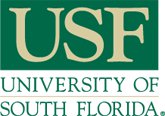Below is a summary of the abstract you submitted. Presenting author(s) is shown in bold.
If any changes need to be made, you can modify the abstract or change the authors.
You can also download a .docx version of this abstract.
If there are any problems, please email Dan at dar78@pitt.edu and he'll take care of them!
This abstract was last modified on March 16, 2021 at 1:29 p.m..

Mycobacterium Phage Girr is a F1 temperate Siphoviridae bacteriophage consisting of 103 genes that account for a total genome size of 57,754 base pairs. As 70% of bacteriophage genes have no known function, an analysis of the Phage Girr genome would confirm the presence of cytotoxic and defense functionality in novel proteins. Gene 67 is a hypothetical protein composed of 50 amino acids. Considering Gene 67 is conserved across a large pham belonging to the F/F1 cluster, a series of Phenotypic Assays were conducted to determine whether this gene has cytotoxic and immunity effects in Mycobacterium smegmatis. An isolated and amplified sample of Gene 67 was obtained from Girr lysate using PCR and inserted into pExTra backbone via Isothermal Assembly to form a complete plasmid. Located within pExTra, are the Origins of Replication for E. coli and M. smegmatis , which allows for the transformation of the plasmid into the bacteria . Using chemical transformation, the plasmid containing Gene 67 was transformed into E. coli and colonized to produce a pure sample of the expressed plasmid. This pure sample was then transformed into M. smegmatis through electroporation, and the resulting colonies were used to conduct a Cytotoxicity Assay to determine if Gene 67 has cytotoxic effect . Within the pExTra plasmid: mCherry, tet Repressor, and Ptet- play essential roles in the Cytotoxicity Assay. The Tet Repressor releases Tetracycline which binds to Ptet and prevents the expression of the gene insert and mCherry. Through the usage of aTc plates, the anhydrotetracycline will act as an inducer molecule and lead to a conformational change in the tetracycline product allowing for gene expression to occur. It is expected that on the highly concentrated aTc plate used during the Cytotoxicity Assay, if the gene is toxic, it will be expressed along with mCherry. When expressed, mCherry leads to a presence of pink coloration in the M. smegmatis colonies. The data collected from the Cytotoxicity Assay shows that when compared to Fruitloop gp52 and Fruitloop gp52-I70S, the gene is not toxic to M. smegmatis and a pink coloration was observed. The Immunity Assay conducted for Gene 67 also shows that the protein does not protect M. smegmatis from further phage infection. While these are interesting results, future experiments can be conducted in order to confirm that Gene 67 is not cytotoxic, as the gene may be affected by the requirements protein-protein interactions, concentration of aTc, or mutations within the genome.
